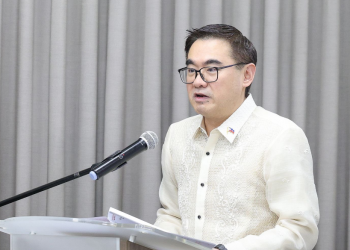Around five percent of solid waste will go to final disposal facilities if managed correctly, according to provincial environmental officer Engr. Marco Andrew Silveron during a briefing with with members of the Association of Negros Oriental Public Information Officers (ANOPIO) recently.
Silveron conducted the briefing to promote the environment department’s zero waste advocacy, as well as the role of local government units in raising awareness about this matter, according to a report.
He noted that the Ecological Solid Waste Management Act emphasized that waste segregation should begin at the household level. It also calls for efficient garbage collection, waste diversion, and waste disposal system, adding that these responsibilities are part of the LGUs’ duties.
“The barangay has the most important role in management of solid waste because segregation, collection, and diversion of wastes should start here. The city or municipal government’s role is to dispose of the waste. This is the mandate to the barangay as per R.A. 9003.,” Silveron noted.
“We really push the barangays to implement their ordinances or their policies because they have more power compared to the mayor. The barangays have direct contact to their households or area of jurisdiction. They really have to implement it,” he added.
The Act also mandates barangays to establish and operate Materials Recovery Facilities (MRFs) for the efficient solid waste management systems. However, only 10 percent of the barangays in Negros Oriental have functional MRFs.
In Dumaguete City, only five barangays have functioning MRFs. Some barangays in Negros Oriental have MRFs, but are used as temporary pig pens or for other purposes.
Silveron said notices were sent to barangays that are not compliant with the proper use of MRFs.
He warned that improper waste management would lead to various negative effects such as contamination of water, air pollution, flooding, and sickness to humans.














